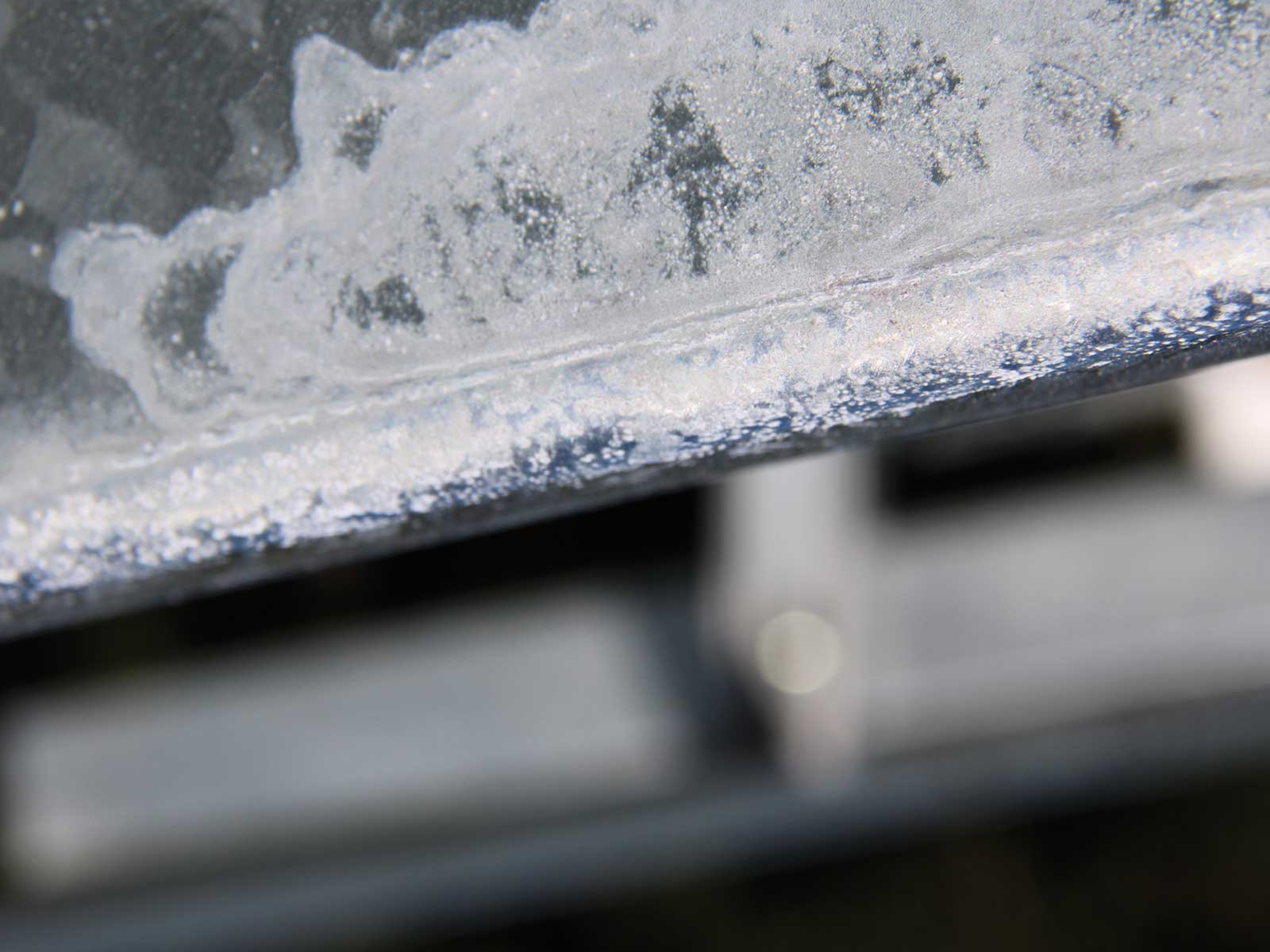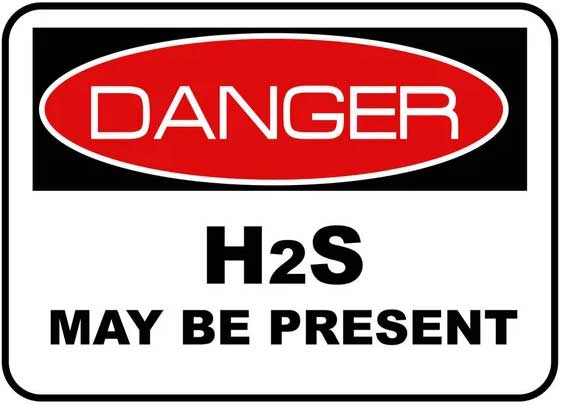

What is White Rust? |
When zinc or aluminum turns white, many people don't really know what causes this to happen. This article tries to explain the phenomenon.
The white rash that forms on galvanized steel and aluminum is often called "white rust. Like ordinary rust, it is a form of corrosion. Corrosion is an attack on the metal, which originates from the surface.
Different metals have different forms of corrosion. For example, ferrous metal will rust brown, but on aluminum and zinc other forms of corrosion occur: zinc oxide and aluminum oxide. In popular speech, these forms of corrosion are both known as "white rust".
Corrosion on ferrous metal
Ferrous metals corrode relatively quickly without protection. Hence, corrosion on ferrous metal is recognizable to everyone: rust, or iron oxidation. This corrosion occurs through a reaction with moisture and oxygen. The iron then acquires the familiar orange-brown rust color.
Corrosion on stainless steel
What many people do not know is that rust can also occur on stainless steel. The main component of stainless steel is iron and nickel and chromium. The added composition of nickel and chromium varies, but the more chromium the better the corrosion resistance of the stainless steel. When chromium comes into contact with oxygen a layer of chromium oxide is formed. This oxide layer protects the underlying stainless steel from further rusting. But if the stainless steel becomes damaged or polluted the oxide layer is no longer fully protective.
Without treatment of the ferrous metal, the rust gets worse and worse. The rest of the metal product is 'eaten' until there is nothing left of it.
Can aluminum rust?
Aluminum is known as a non-rusting metal, but aluminum does experience corrosion. It corrodes even faster than ferrous metal. However, the corrosion on aluminum is actually beneficial to the life of the material.
The aluminum surface reacts to external influences, such as moisture and oxygen. This creates an oxide layer. This oxide layer functions completely differently from oxide (rust) on ferrous metals. It capsulates the aluminum forming a kind of shield against further attack. This form of corrosion does not 'eat' through the aluminum. The aluminum under the layer thus remains strong and unaffected. If aluminum has matt white spots then we speak of "white rust".
Aluminum with an artificially applied oxide layer is called anodized aluminum. Anodizing provides a faster protection than a protective layer that occurs naturally.
Can zinc rust?
To protect corrosion-prone metals such as steel, they are often hot-dip galvanized. The steel product is dipped into a hot bath of molten zinc after which the entire steel surface is covered with zinc. A zinc-iron alloy also forms under the pure zinc layer. After galvanizing, the new zinc layer has a bright sheen. This sheen diminishes over time. This is due to the reaction with oxygen and moisture in the environment. It is best to expose hot-dip galvanized steel to ambient air. After a few weeks, a natural protective layer develops, just as with aluminum. With zinc, this is called a patina layer.
Undesirable white corrosion spots on the zinc occur if water stands still for a long time on the hot-dip galvanized object or if it is in a damp environment and has not been able to ventilate properly (air circulation). These spots are popularly called "white rust," just like the corrosion on aluminum.
When is white rust harmful?
Especially aesthetically undesirable
White spots are often considered undesirable. After all, it doesn't look pretty. But real concerns are unnecessary when exposed to ambient air. The zinc or aluminum underneath is no longer affected. Brown rust does affect the underlying material. Underneath the white rust, an oxide layer forms that protects the underlying metal. From an aesthetic point of view, white rust on the metal surface is undesirable.
White rust under a powder coating or in extreme conditions
So white rust doesn't seem like such a problem, but beware! If you have a product with a powder coating or wet paint, it is necessary to have the white rust treated. The white rust causes the coating to no longer adhere well to the metal surface. The coating is, as it were, pushed off the metal surface: the coating peels off.
For a metal product without a coating, the white rust is mainly an aesthetic inconvenience. But it can happen that a metal product is in an environment with so many corrosive influences that no patina or oxide layer can form. In this case, the white rust does continue and the strength of the metal thus decreases.
Related Post(s)

Submenu |
Submenu |
Submenu |
| safety | documents | materials |
| societies | pipes | flanges |
| fittings | valves | equipment |
| bolts | gaskets | fabrication |
| welding | N D T | specials |
| steel | steam | civil |
| dimensions | others |